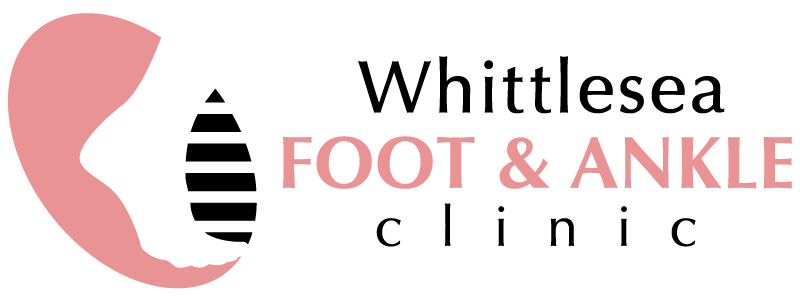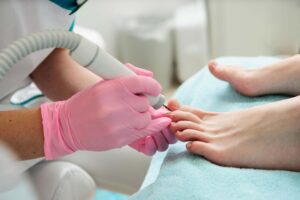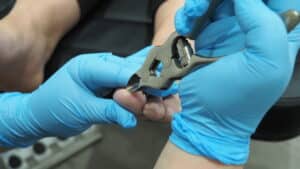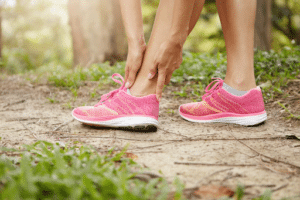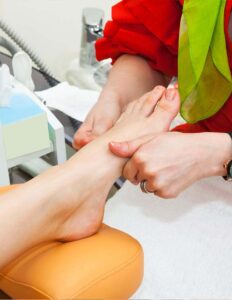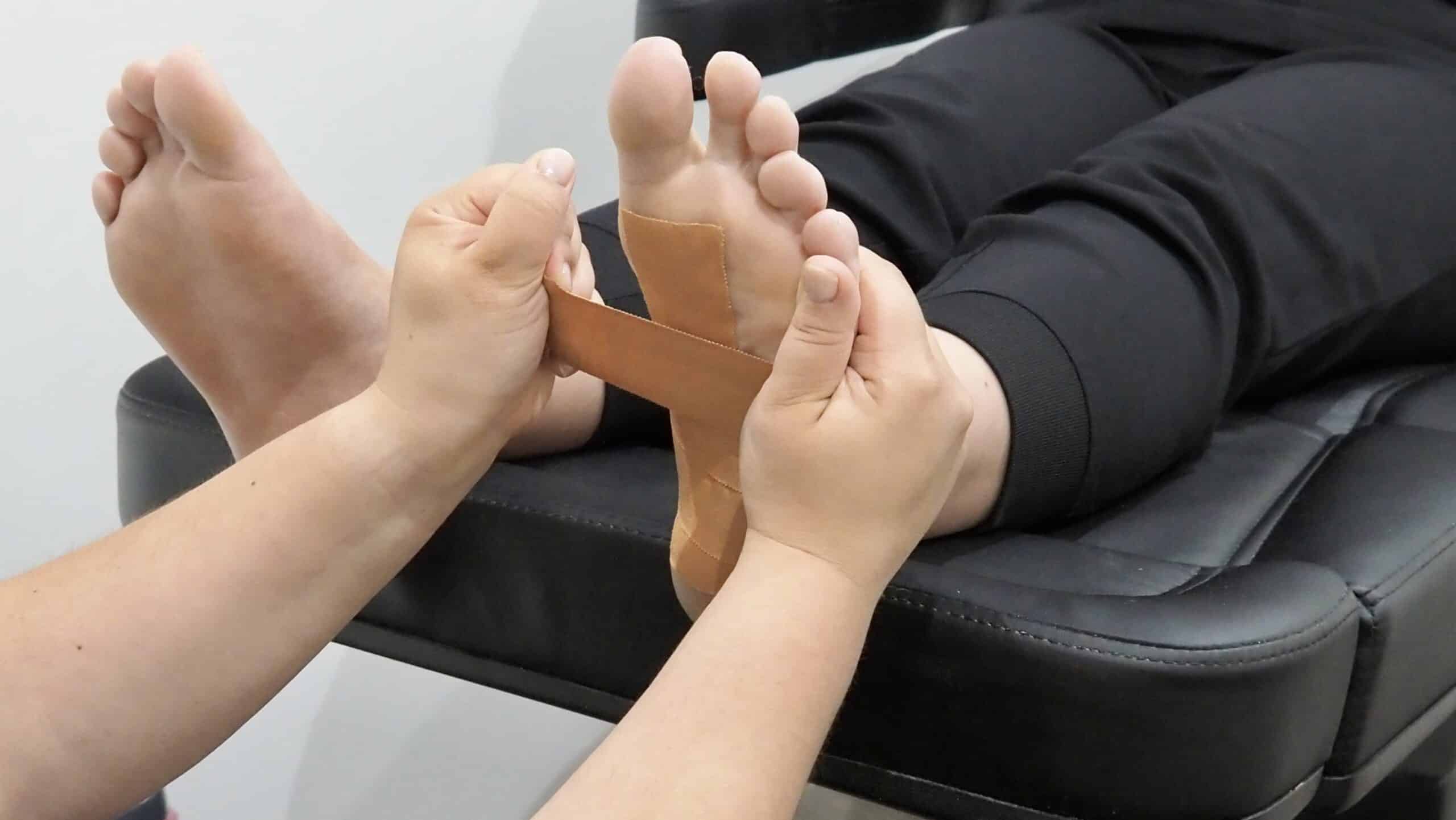Hallux valgus AKA bunions – the nasty bony bumps that form on the big toe
Bunions develop when the big toe pushes against the adjacent toe, forcing the joint of the big toe to enlarge and protrude outward. Bunions can be painful and may cause swelling, redness, and inflammation around the affected joint.
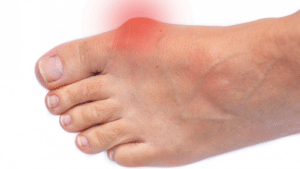
Bunions can develop due to various factors, including genetics, wearing tight or ill-fitting shoes, foot injuries, and certain medical conditions such as arthritis. High heels and narrow-toed shoes can exacerbate bunion formation by putting pressure on the toes. Bunions are more common in women than men, this is often attributed to the higher prevalence of wearing narrow and high-heeled shoes.
Often individuals who experience bunions will also experience common symptoms such as:
- A bony bump at the base of the big toe
- Pain or discomfort while walking or wearing shoes
- Swelling and redness around the affected joint
- Restricted movement of the big toes
- Corns or calluses on the affected toe.
Bunions can worsen over time if left untreated, leading to increased pain and deformity of the toe joint. In severe cases, bunions may cause difficulty walking or wearing shoes and may require surgical intervention to correct.
Treatment Options:
While bunions cannot be cured without surgical intervention, there are several treatment options available to help alleviate symptoms and slow the progression of the condition:
- Footwear Modifications: Wearing shoes that provide ample room for the toes and have a wide toe box can help reduce pressure on the bunion and alleviate discomfort. Avoiding high heels and narrow-toed shoes can also prevent further aggravation of the bunion.
- Orthotic Devices: Custom orthotic inserts or arch supports can help stabilize the foot and redistribute pressure away from the bunion.
- Pain Relief: Over-the-counter pain relievers can help reduce pain and inflammation associated with bunions. Topical treatments such as ice packs or bunion pads may also provide temporary relief.
- Toe Splints or Spacers: Toe splints or spacers can help realign the toes and reduce pressure on the bunion.
- Physical Therapy: Exercises and stretches can help strengthen the muscles around the affected joint, improve flexibility, and alleviate pain.
- Surgical Intervention: In cases where conservative treatments fail to provide relief or the bunion is causing severe pain and deformity, surgical correction may be necessary. Bunion surgery, also known as bunionectomy, involves realigning the bones of the toe joint and removing the bony bump to improve foot function and alleviate pain.
If you’re experiencing symptoms of bunions or have concerns about your foot health, consult a healthcare professional or podiatrist for an accurate diagnosis and personalised treatment plan tailored to your specific needs.
If you think you may have a bunion or want to know more please contact our clinic on 8468 2411 book online here.
